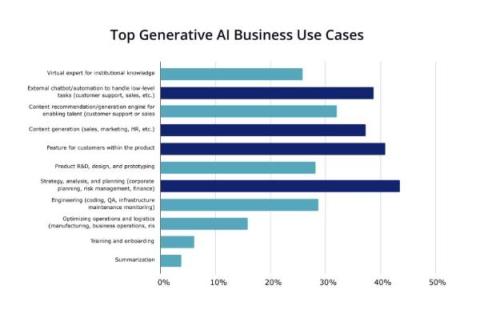Systems | Development | Analytics | API | Testing
Machine Learning
How Sense Uses Iguazio as a Key Component of Their ML Stack
How HR Tech Company Sense Scaled their ML Operations using Iguazio
Making BigQuery ML feature preprocessing reusable and modular
BigQuery ML’s approach to feature engineering, modularity, allows for easy reuse of feature pipelines within BigQuery, and portability to Vertex AI.
Establishing A Framework For Effective Adoption and Deployment of Generative AI Within Your Organization
Adopting and deploying Generative AI within your organization is pivotal to driving innovation and outsmarting the competition while at the same time, creating efficiency, productivity, and sustainable growth. Acknowledging that AI adoption is not a one-size-fits-all process, each organization will have its unique set of use cases, challenges, objectives, and resources.
ML-Based Forecasting and Anomaly Detection in Snowflake Cortex, Now in GA
Historically, only a few AI experts within an organization could develop insights using machine learning (ML) and predictive analytics. Yet in this new wave of AI, democratizing ML to more data teams is crucial—and for Snowflake SQL users, it’s now a reality.
What Lays Ahead in 2024? AI/ML Predictions for the New Year
Using ClearML and MONAI for Deep Learning in Healthcare
This tutorial shows how to use ClearML to manage MONAI experiments. Originating from a project co-founded by NVIDIA, MONAI stands for Medical Open Network for AI. It is a domain-specific open-source PyTorch-based framework for deep learning in healthcare imaging. This blog shares how to use the ClearML handlers in conjunction with the MONAI Toolkit. To view our code example, visit our GitHub page.
27 Best Free Human Annotated Datasets for Machine Learning
It's Midnight. Do You Know Which AI/ML Uses Cases Are Producing ROI?
In one of our recent blog posts, about six key predictions for Enterprise AI in 2024, we noted that while businesses will know which use cases they want to test, they likely won’t know which ones will deliver ROI against their AI and ML investments. That’s problematic, because in our first survey this year, we found that 57% of respondents’ boards expect a double-digit increase in revenue from AI/ML investments in the coming fiscal year, while 37% expect a single-digit increase.








